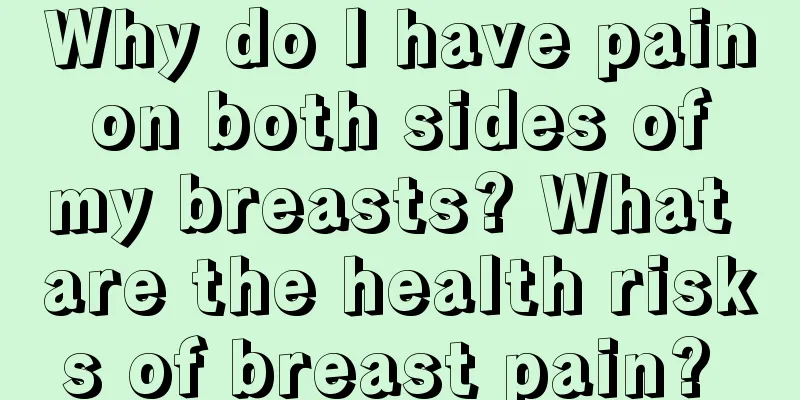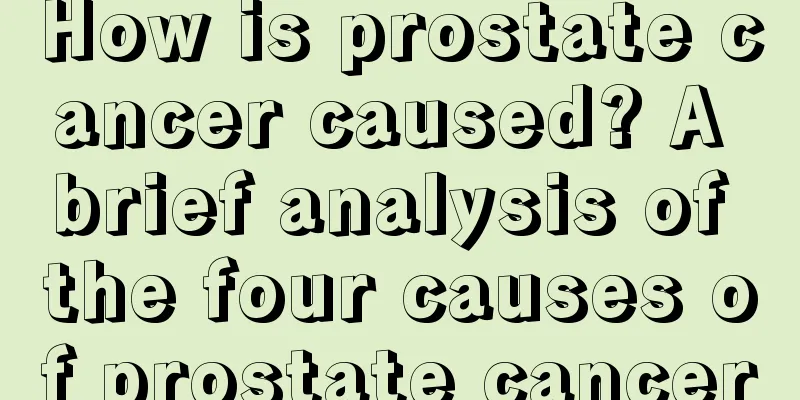Why do I have pain on both sides of my breasts? What are the health risks of breast pain?

|
Breasts are the foundation of women. Having healthy and plump breasts is a woman's happiness. However, many women experience breast discomfort, pain and other symptoms before and after their menstrual period. Breast health problems cannot be ignored. The internal structure of the breast is very complex, which can cause breast diseases and endanger physical health. So what is the reason for pain on both sides of the breast? 1. Cyclic breast pain: It is related to the menstrual cycle and reflects the cyclical changes in hormones in the body. This pain is normal to a large extent and mainly occurs in premenopausal women, especially before the age of 35. This condition is generally cyclical pain caused by breast hyperplasia. 2. Non-cyclical breast pain: Compared with cyclical breast pain, non-cyclical breast pain is more worthy of attention. But most non-cyclical breast pain is also benign. Its characteristics include intermittent onset, variable pain intensity, mostly unilateral occurrence, and sharp nature. Patients need to pay attention to this situation. The real "murderer" of breast pain and tingling - breast hyperplasia Most breast pain and tingling are caused by breast diseases. Experts remind people to be alert to breast hyperplasia when breast pain occurs. The main symptoms of breast hyperplasia are breast pain and breast lumps: 1. Breast pain: It is often characterized by distending pain or stabbing pain, which may affect one or both breasts, with one side being more severe. Those with severe pain cannot touch the breast, and may even have an impact on their daily life and work. The pain is mainly in the breast lump, and may also radiate to the affected armpit, chest, flank, shoulder and back; some people experience nipple pain or itching. Breast pain often occurs or worsens a few days before menstruation, and the pain is significantly reduced or disappears after menstruation; the pain may also fluctuate with mood changes. This pain related to the menstrual cycle and emotional changes is the main feature of the clinical manifestations of hyperplasia of the breast. 2. Breast lumps: Lumps can occur in one or both breasts, single or multiple, often in the upper outer quadrant of the breast, but can also be seen in other quadrants. The shapes of the lumps include flake-shaped, nodular-shaped, cord-shaped, granular-shaped, etc., among which the flake-shaped is the most common. The lump has unclear boundaries, is of medium or slightly hard texture, has good mobility, has no adhesion to surrounding tissues, and is often tender. The lumps vary in size, with small ones being as big as millet grains and large ones exceeding 3 to 4 cm. Breast lumps also change with the menstrual cycle. The lumps become larger and harder before menstruation, and shrink and soften after menstruation. |
<<: Can I eat soybeans if I have high blood sugar? What are the benefits of soybeans?
>>: How to lose weight and show collarbone? Mastering the skills is crucial
Recommend
What are the symptoms of prostate cancer? Is urination difficulty a manifestation of prostate cancer?
Prostate cancer is a relatively complicated disea...
Can a pregnant woman with rectal cancer give birth to a child?
Currently, many women wait until they are very ol...
Symptoms and signs of ovarian cancer
Symptoms of ovarian cancer generally include abdo...
Hiccups for 5 days with occasional chest tightness
Hiccups are a way for air produced in the stomach...
What are the functions of Vaseline moisturizing cream
Women love beauty very much. Based on this charac...
How to remove contact lenses
Wearing contact lenses may be a little uncomforta...
What should adults pay attention to when they have chickenpox?
I believe everyone has a misunderstanding that ch...
Self-heating knee pads, what are the benefits of self-heating knee pads, will there be any side effects
Self-heating knee pads use a self-heating system ...
How long can patients with advanced nasopharyngeal carcinoma live
The survival time of patients with advanced nasop...
How long after giving birth can I take a bath?
In life, everyone likes to scrub their body after...
How effective is hormonal breast augmentation?
Breast enhancement and weight loss are topics tha...
How to fix a mattress that is too soft
Many young friends who do not have much life expe...
Does lung cancer mean it is in the middle or late stage if it does not have any symptoms? You must know these common knowledge about lung cancer
Lung cancer is a disease that deserves everyone&#...
Steps to apply liquid foundation
Girls should all know about liquid foundation, an...
Black loose stools are a detoxification method
Both human defecation and urination are related t...









